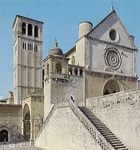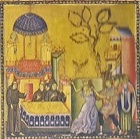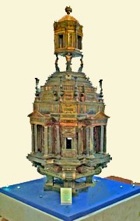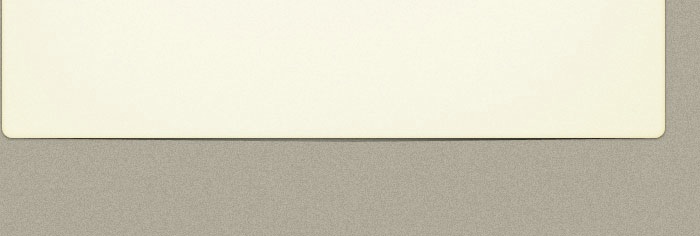


The museum off the cloister of the Sacro Convento, which is reached from the left transept of the lower church. Opening hours are published on the website of Musei Ecclesiastici Umbri.

The American art critic collector and dealer, Frederick Mason Perkins, who had lived in Assisi, left much of his art collection to the Sacro Convento when he died in 1955. These works, which are still referred to as the Perkins Collection, are exhibited in the adjoining Sala Rossa, at the far end of the museum. (Other works that he left to the diocese are now in Museo Diocesano).
St Francis Dossal (ca. 1253)

This historiated icon of St Francis was first documented in 1570, when it hung above the door to the sacristy in the lower church. The panel might well have been in place in the lower church when its high altar was consecrated in 1253. At least by the 16th century, it was believed to have been painted on the board on which the body of St Francis had been washed in preparation for burial, and it thus had the status of a relic. It might have served as a surrogate for the interred relics of St Francis, and was perhaps above the choir screen or on one of its altars until this screen was demolished in ca. 1300.
The central iconic figure of St Francis displays the stigmata on his hands and feet and holds a cross and a Bible. The latter is open to reveal the text of Matthew 19:21: "If you wish to be perfect, go, sell your possessions and give the money to the poor and you will have treasure in Heaven; then come and follow me". This was one of the texts upon which Francis had based his Rule for the Order. Four scenes of posthumous miracles of St Francis surround the central icon.
Four scenes of posthumous miracles of St Francis surround the central icon.
-
✴The scene on the lower left shows the healing of Bartolomeo da Narni.
-
✴The events depicted on the upper left and on the lower right occurred at the shrine at San Giorgio prior to Francis's canonisation. these were, respectively:
-
•the healing of a girl whose head was joined to her shoulder (using two images of the mother and daughter to show the scene “before and after”), which occurred on the day of the funeral of St Francis; and
-
•the healing of a cripple, perhaps Nicholas of Foligno.
-
✴The scene on upper right depicts the exorcism of a woman near the high altar of the lower church. This is probably the girl from Norcia who was freed of demons as she “lay prone before the altar of St Francis” at Assisi during Mass on the Feast of the Circumcision of Christ. This was first published in the Tractus de Miraculis , which supports the dating of the panel to the period around 1253, the date at which the altar was consecrated.

Christus Patiens (ca. 1270)

The other Crucifix was taken to Cologne in 1836.
Isaiah (ca. 1272)

God the Creator (ca. 1290)

This detail is of the corresponding figure in the finished fresco, which depicts the Creation of the World.
Chalice of Pope Nicholas IV (ca. 1290)

St Elizabeth of Hungary (1403)

The polyptych was probably dismantled in 1536, the date at which the high altar of San Francesco al Prato was moved backwards into the apse and re-consecrated. The individual panels, which were subsequently moved to the sacristy, were then transferred to the Accademia di Belle Arti in 1810. Most of them are now in the Galleria Nazionale, Perugia, but a few, including this one, have been dispersed.
Christ crowned with thorns (ca. 1460)

Tapestries (1470s)

The museum contains the only two survivors from a collection of tapestries that Pope Sixtus IV gave to the friars to adorn the altars and chapels of San Francesco.
-
✴The tapestry illustrated above was made in Florence. In fact, two originally independent elements are now attached to a single lining:
-
•the gilt frieze above contains embroidered images of Franciscan saints; and
-
•the altar frontal below, which was originally in three pieces, contains a central field in which Sixtus IV kneels at the centre before St Francis. The saint displays the stigmata on his right hand and holds a cross in his left hand.
-
✴The second tapestry depicts the Franciscan tree, with St Francis at its centre receiving the stigmata below a figure of the Madonna and Child. The figures of Franciscan saints appear as fruits on the tree:

-
•SS Clare, Louis of Toulouse and Elzear on the left; and
-
•SS Antony of Padua, Bernardino of Siena and Elizabeth of Hungary on the right.
-
The figures standing in the meadow below represent:
-
•three Franciscan popes, Nicholas IV, Sixtus IV and Alexander V; and
-
•at the extremes, two Franciscan theologians; Bonaventure (shown before his canonisation by Sixtus IV in 1482) and Pierre d'Auriole.
Choir stalls (1468-71)

These four choir stalls, which came from the Lower Church, were carved by Apollonio Petrocchi da Ripatransone, Tommaso di Antonio Fiorentino and Andrea da Montefalco.
Stained Glass
Panels from stained glass windows in Perugia and Foligno, which were subsequently used in San Francesco, are now in the Museo del Tesoro:
-
✴panels (ca. 1484) from the Cappella di Sant’ Onofrio in the Duomo of Perugia, which are attributed to Neri di Monte; and
-
✴the panels (1485-8) from the tribune of the Duomo of Foligno, which are documented as his work.
[This glass was not on exhibition here at April 2010 ???]
Processional Standard (15th century)


-
✴the Annunciation; and
-
✴the stigmatisation of St Francis.
[More]
Crucifixion with saints (ca. 1509)

Madonna and Child with saints (1516-7)

Tabernacle (ca. 1570-80)

Sacro Convento (1703)

Read more:
G. Morello and L. Kanter (Eds), “Treasury of Saint Francis of Assisi: Masterpieces from the Museo Della Basilica of San Francesco”, Milan (1999).
Return to the page on the Lower Church.
Return to the main page on San Francesco.
Return to Walk III.
Return to the home page on Assisi.

